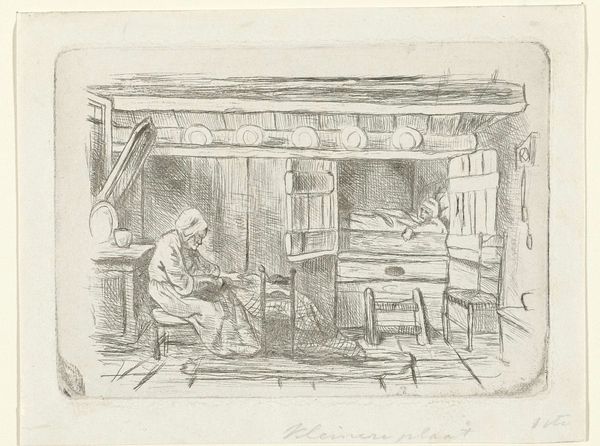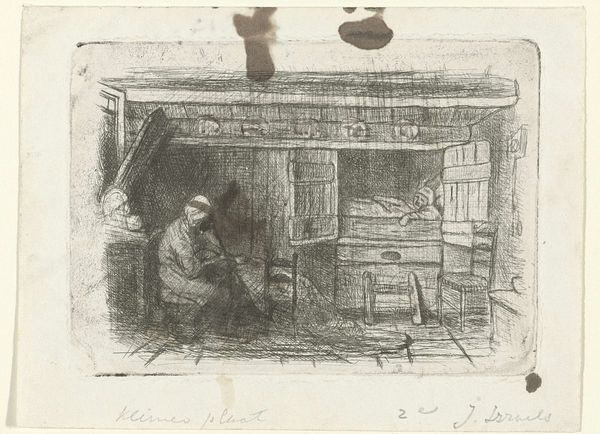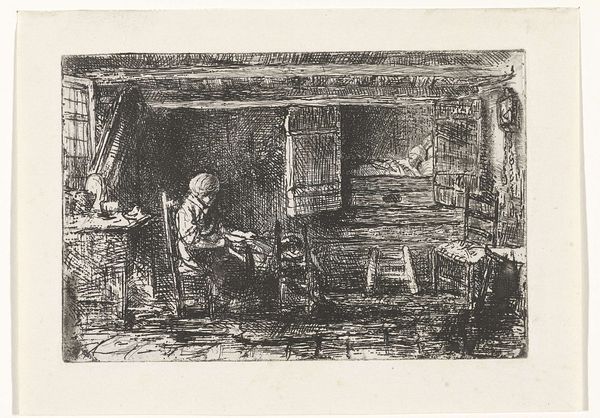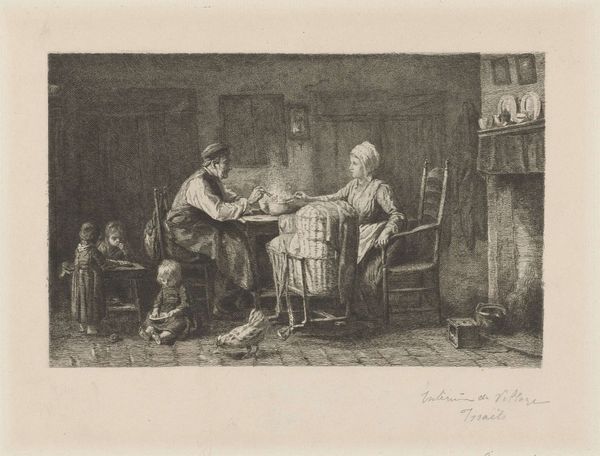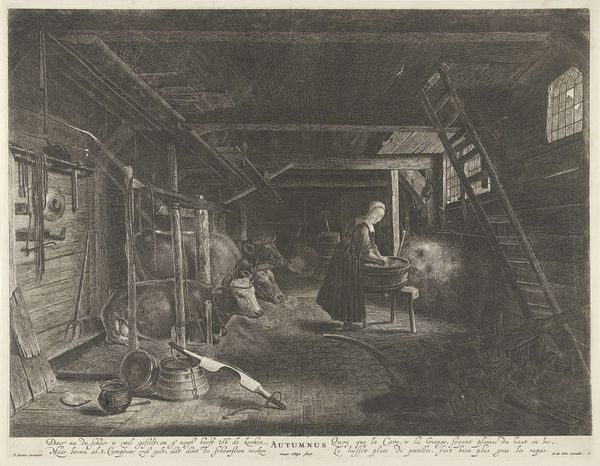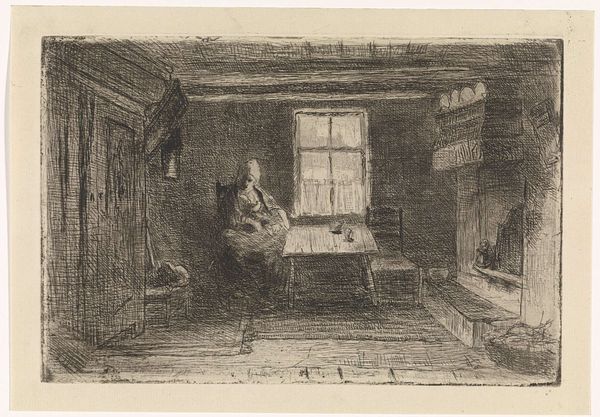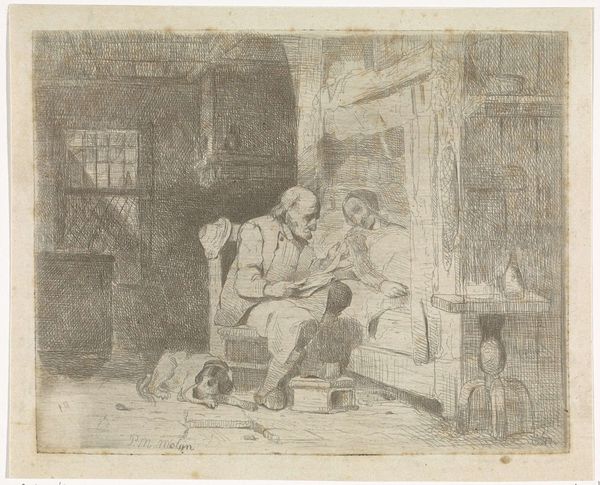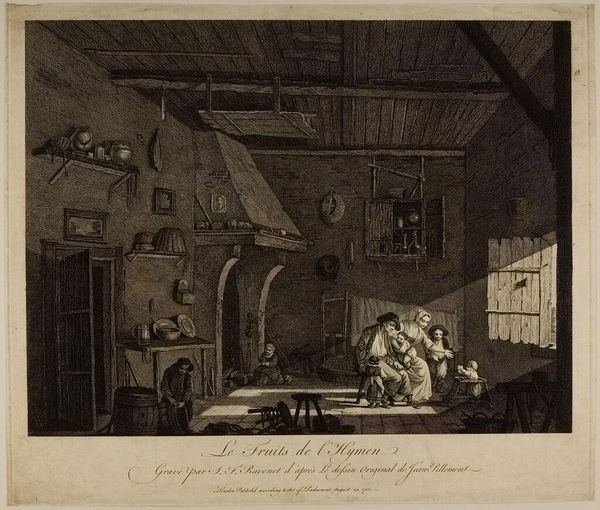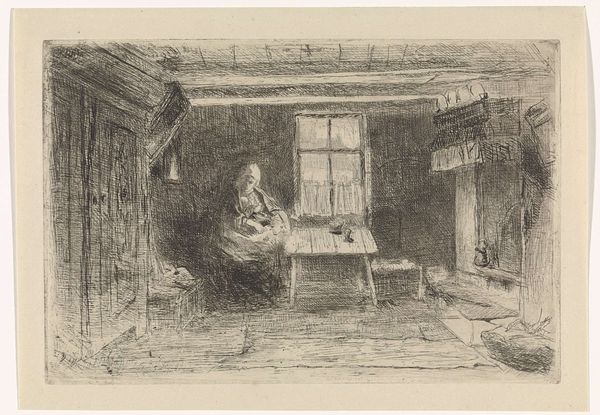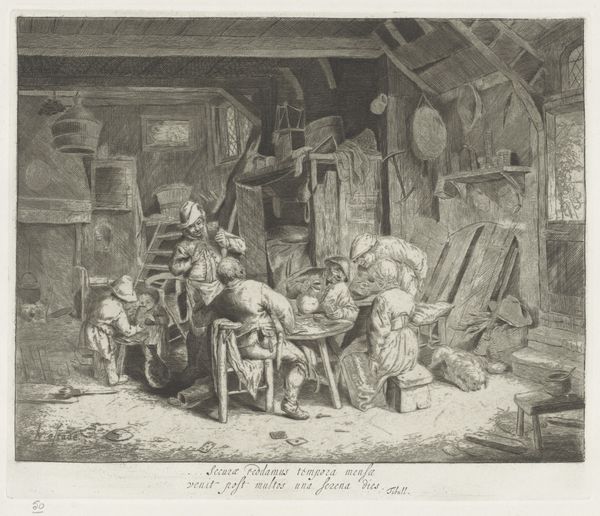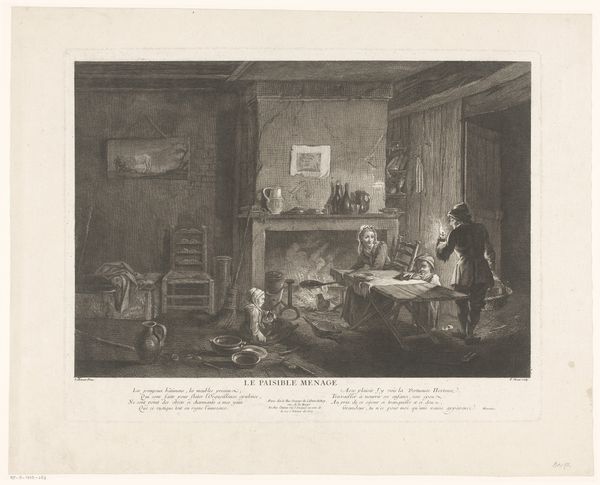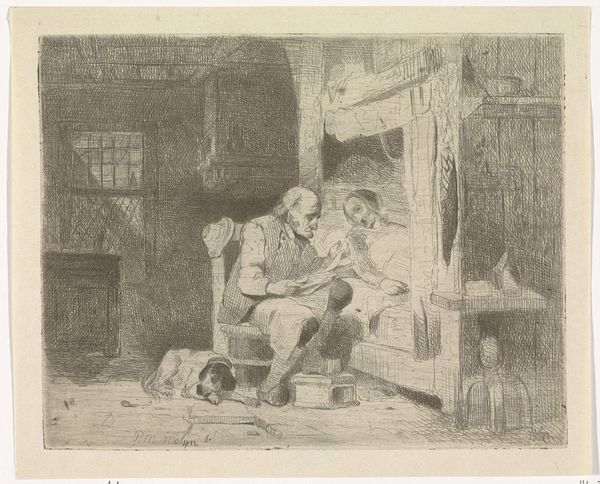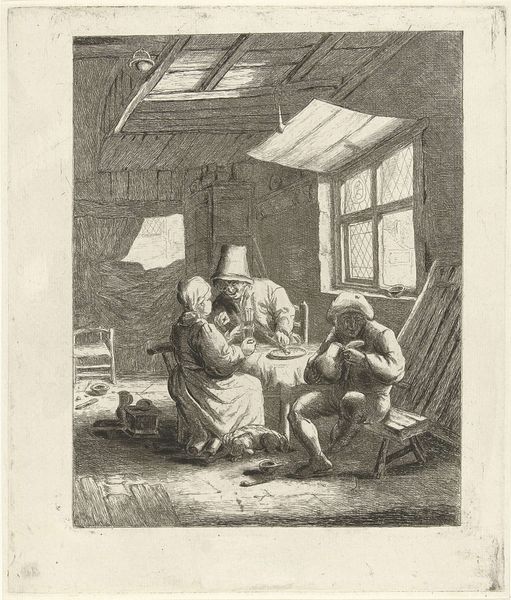
drawing, ink, pen
#
portrait
#
drawing
#
amateur sketch
#
aged paper
#
toned paper
#
quirky sketch
#
dutch-golden-age
#
pencil sketch
#
old engraving style
#
personal sketchbook
#
ink
#
pen-ink sketch
#
sketchbook drawing
#
pen
#
genre-painting
#
sketchbook art
#
realism
Dimensions: height 92 mm, width 57 mm
Copyright: Rijks Museum: Open Domain
Curator: What a wonderfully intimate drawing this is. Jozef Israëls created "Twee figuren in een interieur," or "Two Figures in an Interior," sometime between 1835 and 1888. It's currently housed right here at the Rijksmuseum, made with pen and ink. Editor: It feels unfinished, almost like a fleeting thought captured on paper. The sketchiness evokes a strong sense of the domestic, though—a hushed interior where lives unfold quietly. Curator: Exactly. Israëls was deeply engaged with portraying the lives of ordinary people, especially those facing hardship. The woman in the foreground appears to be mending clothes, while someone rests in bed in the background. I wonder about the relationship between these two figures and the nature of their labor. Editor: You're right. The act of mending—itself a repetitive, necessary task. Think of the material realities embedded within those clothes. Who made them? Under what conditions? Are they patched and worn due to poverty or simply the passage of time? Even the lines in the sketch, etched and thin, they hint at the careful labor demanded by the medium itself. Curator: And think about the domestic space. It simultaneously provides safety and reinforces gender roles and social expectations. The woman's work is unseen, uncelebrated, yet completely vital. Israëls subtly critiques this dynamic, offering a glimpse into a world where labor and rest are unevenly distributed. Editor: Yes, and note how the light barely penetrates the scene. This highlights the somber and physically demanding aspects of the figures’ daily existence. Curator: Israëls really understood how to depict a sense of place that resonated with larger social themes—the Dutch Golden Age's legacy and realism combine powerfully here. Editor: Considering Israëls' context and these figures' circumstances, every object and gesture becomes significant—an insight into 19th-century working-class life and all its complexities. Curator: Absolutely, the layers of meaning he embeds make this small work incredibly powerful. Editor: A modest piece that makes us think about what isn’t immediately apparent about labour and interpersonal roles.
Comments
No comments
Be the first to comment and join the conversation on the ultimate creative platform.
